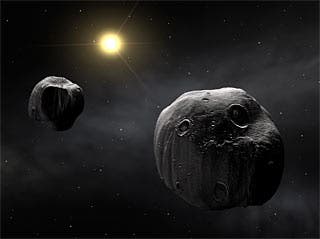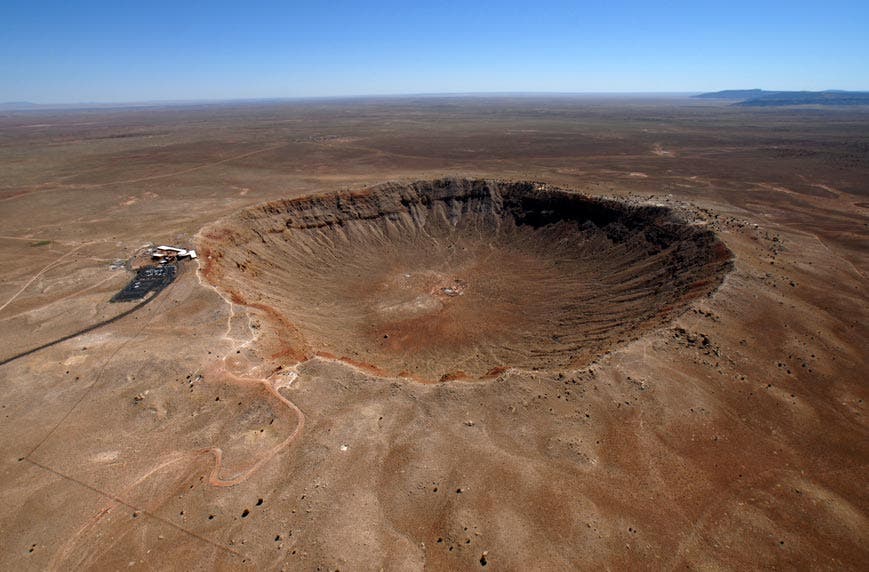The (still debated) asteroid that slammed into the Earth 65 million years ago and played a crucial role in wiping dinosaurs out, may have actually been a binary system- 2 asteroids engaged in an orbit around each other.
Double trouble
The surprising claim comes from analyzing the proportion of asteroid craters on Earth that were formed from binary impacts; the results also add to the concern of those who fear catastrophic collisions in future. Here’s the deal: our planet bears the scars of twin-asteroid impacts just like single impact craters; a good example is the Clearwater Lakes near Hudson Bay in Canada, formed 290 million years ago. However, examples like this are pretty rare: 98% of all craters are single impact, with only 2 in 100 coming from a binary system.
“It’s been known for 15 years that about 15 per cent of near-Earth asteroids are binary,” says Katarina Miljković at the Institute of Earth Physics in Paris, France.
So, all things being equal, if 15 percent of all asteroids are binary, why aren’t 15 percent of craters binary ? Miljković and her colleagues believe they have found the answer: they ran computer simulations and found that even binary systems often form a single crater, mimicking a single asteroid impact.
Considering that the crater is typically 10 times bigger than the asteroid, this seems intuitive. The team found that only unusual cases involving two small, widely separated asteroids are guaranteed to form a pair of distinct craters. Their simulations confirmed that such situations are just rare enough to explain why paired craters account for only 2 per cent of all Earth’s craters.
Symmetry and non-symmetry
The next step was, of course, seeing if single craters caused by single asteroids could be differentiated by single craters caused by binary asteroids. What they found is that it is possible to identify which of Earth’s single craters had binary origins – these craters should be subtly asymmetrical – a feature displayed by the crater near Chicxulub in Mexico – thought to lead to the extinction of the dinosaurs.
“The Chicxulub crater shows some important asymmetries,” says Miljković. “It is worth considering that it was formed by a binary asteroid.”
Geophysical research is key to studying such impact craters – gravity measurements are a great indication for this, especially for asteroids which are still buried. Studying the gravity anomalies supported this theory, as Petr Pravec at the Academy of Sciences of the Czech Republic in Ondrejov explained.
“The signatures also suggested that the Chicxulub crater might have been formed by a binary asteroid impact,” he says.
So what did Chicxulub looked like? Most likely, if it was indeed a binary, the 180 km radius of the crater suggests the combined diameter of the two asteroids being somewhere around 7 to 10 km – the same diameter as the single rock previously imagined to be the culprit.
Twice the asteroid – twice the problem?
If this is true, what does it mean for future impact mitigation and preparation? Even with today’s technology, we have what it takes to totally avoid the dangers posed by an asteroid, but what happens with a binary?
“I am not sure if any of the proposed asteroid deflection techniques could deflect both binary components with a single weapon,” says Katarina Miljković at the Institute of Earth Physics in Paris, France, who led the new study.
However, researchers seem prepared for this possibility as well. Don Yeomans of NASA’s Near Earth Object Program thinks that won’t be a problem for a future asteroid-deflecting spacecraft.
“There is a slim chance that the autonomous navigation camera might be confused with two images in its field of view, but I should think these issues would be easily overcome,” he says.











